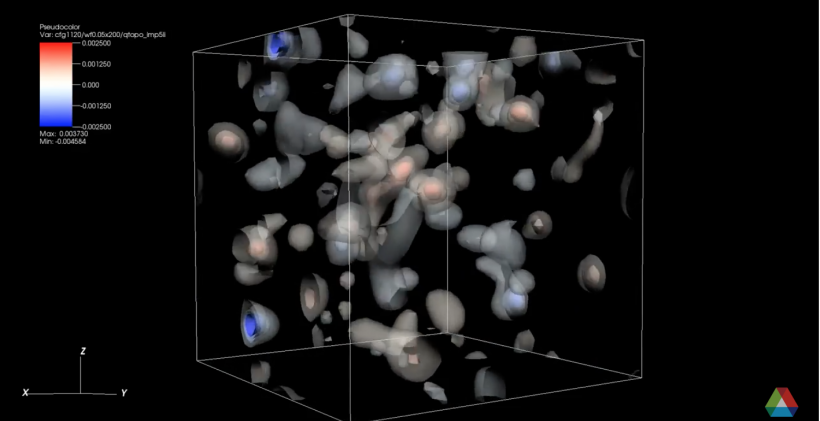CREDITS: S.Syritsyn, for the RBC/UKQCD Collaboration
BNL and RBRC; UC Boulder; U. of Connecticut;
Columbia U.; Edinburgh U.; KEK; Liverpool U.; MIT; Peking U.; Southampton U.; Stony Brook U.; York U., CA.
This video represents fluctuations of the topological charge of “color” fields in Quantum chromodynamics (QCD), simulated on a periodic 4-dimensional lattice approximately 5.5 femtometers across. QCD governs interactions of quarks and gluons that bind them into protons and neutrons, and lead to forces holding the nuclei together. Quantum gluon fields have complex topology, with lumps of the topological charge being instantons (red) and anti-instantons (blue).
This fluctuating topology of QCD fields may lead to violation of the charge-parity (CP) symmetry and induce electric dipole moments (EDMs) in neutrons, protons, nuclei, and atoms. EDMs are sought in experiments as evidence of CP violation, which is required for the creation of nuclear matter in the early hot Universe. Additionally, these topology fluctuations generate the mass for the axion, a hypothetical particle that might explain the enigmatic nature of Dark Matter.
This research used resources of the Argonne Leadership Computing Facility, which is a DOE Office of Science User Facility supported under Contract DE-AC02-06CH11357.
